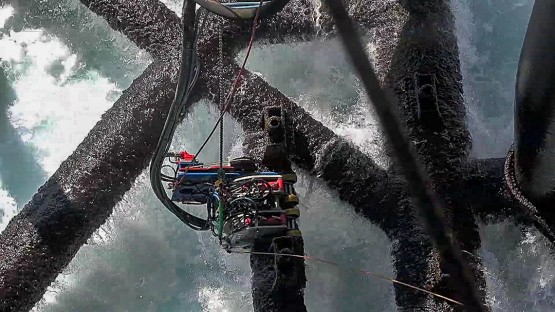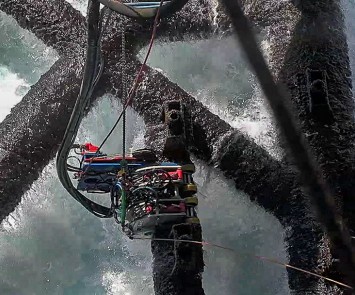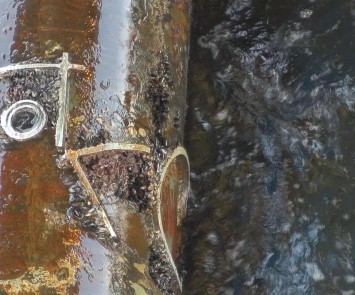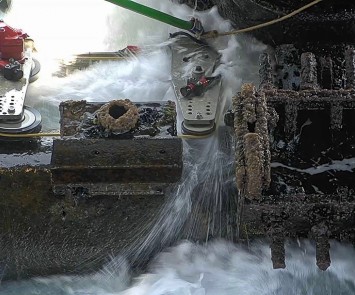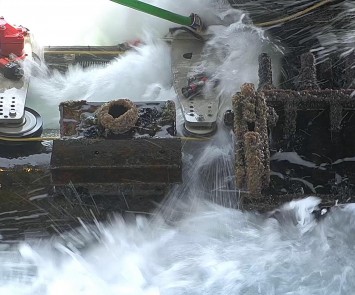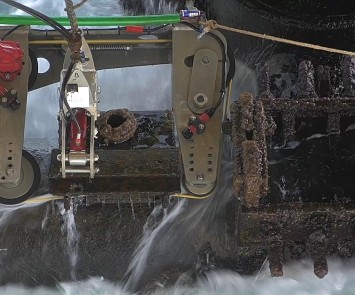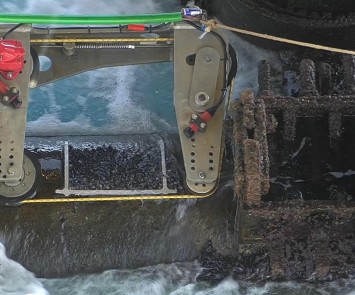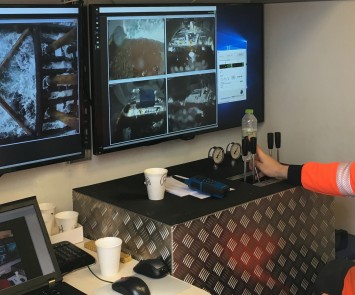The "Spider Deck
Clean-Up" Campaign
SubC initiated the campaign at Tyra the 18th July 2018, and the last cut was performed the 18th July 2019 - precisely 1 year later.
The Tyra Redevelopment
The Tyra field is located in the Danish Sector of the North Sea, 225 km west of Esbjerg. The field has been the centre of Denmark’s national energy infrastructure since 1984, processing 90 % of the gas production.
The redevelopment of Tyra ensures continued production from Denmark’s largest gas field by extending its operational lifetime at least 25 years. This means that Denmark can remain self-sufficient with gas.
The Tyra Redevelopment started at the end of 2017 and is expected to be completed in 2022.
On the Tyra platforms, the spider decks were originally six metres above sea level. However, the platforms have subsided over time and the spider decks are now located in the water. In connection with the redevelopment of the Tyra platforms various tubulars being a part of the spider decks had to be decommissioned. SubC Partner were contacted by Total to engineer a solution to remove the tubulars.
The objective for solving the project was to perform the work in the splash zone without having personnel in the splash zone. Therefore, we decided to use our special Robotic Crawler equipped with various special designed diamond wire cutters for the job. The job thereby could be operated from our containerized control unit placed safely on the topside of the platform.
The Robotic Crawler
The Robotic Crawler can hook onto the structure and safely crawl to the required position where it can perform its tasks. Once in position, the tool application is activated, and the job is carried out from a stable working-platform even with waves hitting the crawler every few seconds. The system is based on a topside operated access solution, from a cockpit located in the containerized control unit placed safely on the topside of the offshore platform. From this, the operator controls the robotic crawler and operations are performed without the need for a support vessel.
Patent is pending on the Robotic Crawler system.
The Spider Deck Clean-up Campaign
After the completion of the campaign Henrik Fur Lisby, Structural Engineer at Total E&P, stated:
Facts:
The past year the crawler has completed 124 complicated cuts in the splash zone
- 82 vertical cuts on Tyra East (B, C, and E) and Tyra West (B and C)
- 28 circumferential cuts on Tyra East (B and C)
- 14 angle iron cuts on Tyra East C
And not least, we recorded 0 incidents in the harsh environment.
Ensuring enough space for the Robotic Crawler to operate
During most of the campaign, it was vital to remove light steel structures to ensure enough space for the crawler to operate. In this connection, we developed the “Grabber and Wire Diamond Cutter Light”. This application was lowered from the topside to the splash zone, where it grabs, cuts and remove the steel structure.
Complicated cuts in the splash zone:
- 14 angle iron cuts on Tyra East C
The Grabber brought the light steel structures to a safe position on the platform afterwards.
Decommissioning tubulars using the Vertical Wire Diamond Cutter
The first part of the campaign was to cut tubulars on the spider decks. In this connection, we developed the Wire Diamond Cutter applications.
82 complicated vertical cuts in the splash zone:
- 17 vertical cuts on Tyra East South
- 17 vertical cuts on Tyra East North
- 12 vertical cuts on Tyra West C
- 12 vertical cuts on Tyra West B
- 12 vertical cuts on Tyra East C
- 12 vertical cuts on Tyra East B
The Robotic Crawler handled the tubulars after cutting and brought them to a safe position on the platform.
Decommissioning of surplus steel structures using the Circumferential Wire Diamond Cutter
This part of the campaign involved our special developed Circumferential Wire Diamond Cutter for decommissioning of surplus steel structures from the main tubulars of the jacket constructions. The decommissioning was done safely and controlled; one section at a time.
28 complicated circumferential cuts in the splash zone:
- 14 circumferential cuts on Tyra East C
- 14 circumferential cuts on Tyra East B
The special Grabber was used for bringing the structures to a safe position on the topside of the platform.
Increased offshore safety
Before the Robotic Crawler, work in the splash zone was done using divers or rope access technicians. Work in this zone was full of inherent risk and could only be carried out when waves were no higher than half a meter, which is a rarity in the North Sea. Divers compare it to working in a washing machine where they need to remain in place while also avoiding becoming trapped under the structure.
From the beginning, Tonny Klein, CEO at SubC, knew that neither divers nor rope access technicians could resolve this task.
The Robotic Crawler worked in 2,5 metres high waves and what is more, it can operate night and day - all time of the year. Thereby the Robotic Crawler system improves HSE and no incidents occurred throughout the campaign.
Saved Total a very large sum of money
Although it is a complicated set-up, the crawler requires only a few specialists to operate. Before the Robotic Crawler, Total depended on a large set-up that costed a great deal of money in gear, manpower and support vessels. As mentioned above, they also dependent on good weather and calm seas, which required a great deal of preparation involving a lot of resources. The crawler solves all these challenges at once.
Awards
April 2019: Won Total’s Best Innovators Award in the category of Technical Innovation Solutions for the North Sea and Russia.
July 2019: The Robotic Crawler was among the Global top 10 at the Total E&P Best Innovators Award in Paris.
Applications for the Robotic Crawler
Beside decommissioning of tubulars, the Robotic Crawler is also used for the following operations for Total:
- UT Thickness Measurement of tubulars
- Removal of Marine Growth
- Inspection of Flooded Members
- Close Visual Inspection of Welded Connections
Read more about the Robotic Crawler and its applications here
